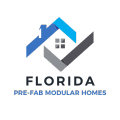As we step into 2023, the world of prefab homes continues to evolve, bringing exciting design trends that marry aesthetics, functionality, and sustainability. Whether you’re considering a prefab home or simply looking for inspiration, this guide will introduce you to the latest design trends that are heating up the prefab housing market.
1. Modern Minimalism
In 2023, the clean lines and simplicity of modern minimalism are dominating prefab home design. Open floor plans, sleek finishes, and a focus on essential elements create homes that are both visually appealing and highly functional. Minimalist prefab homes often feature large windows to bring in natural light, making the spaces feel even more open and inviting.
2. Sustainable Materials
Eco-consciousness is a key driver in contemporary prefab home design. Sustainable materials like reclaimed wood, recycled steel, and energy-efficient insulation are increasingly being used to create environmentally friendly and aesthetically pleasing homes. These materials not only reduce the carbon footprint but also add a unique and rustic charm to the design.
3. Biophilic Design
Bringing nature indoors is a trend that continues to gain momentum in 2023. Biophilic design in prefab homes integrates natural elements like wood, stone, and plants, creating a harmonious and calming environment. Large windows, indoor gardens, and natural materials help residents connect with the outdoors while enjoying the comfort of their homes.
4. Smart Homes
Technology is playing a more prominent role in prefab home design. Smart home features such as integrated home automation systems, energy-efficient appliances, and voice-activated controls are becoming standard offerings. These features enhance convenience and energy efficiency while adding a futuristic touch to prefab homes.
5. Modular Flexibility
Modular designs are becoming increasingly popular, allowing homeowners to customize and expand their living spaces as needed. Modular components can be added or removed easily, giving homeowners the flexibility to adapt their homes to changing needs, whether it’s accommodating a growing family or creating dedicated workspaces.
6. Natural Color Palettes
Neutral and earthy color palettes are in vogue for prefab homes in 2023. Shades of beige, gray, and muted tones create a calming and timeless atmosphere. These colors provide a versatile backdrop for personalization through furnishings and decor, allowing homeowners to express their unique style.
7. Energy Efficiency and Net-Zero Homes
With a growing focus on sustainability, energy-efficient and net-zero prefab homes are gaining traction. These homes are designed to produce as much energy as they consume, contributing to a smaller carbon footprint and significant energy savings for homeowners. Solar panels, advanced insulation, and efficient HVAC systems are key components of these eco-conscious designs.
8. Indoor-Outdoor Living
Prefab homes are embracing the concept of indoor-outdoor living. Expansive sliding glass doors, outdoor kitchens, and spacious decks or patios seamlessly connect the interior and exterior spaces, creating an inviting and versatile living environment that celebrates Florida’s sunny climate.
9. Customization Options
Today’s prefab home manufacturers offer extensive customization options, allowing homeowners to personalize every aspect of their homes. From floor plans to finishes and fixtures, customization ensures that your prefab home reflects your lifestyle and preferences.
In conclusion, 2023 promises to be an exciting year for prefab home design. Whether you’re drawn to the elegance of modern minimalism, the eco-consciousness of sustainable materials, or the flexibility of modular designs, prefab homes offer a wide array of options to suit your style and values. As the year unfolds, keep an eye on these trends to help you create the perfect prefab home that blends aesthetics, functionality, and sustainability.
Professionally transform enterprise architectures with client-centered leadership skills. Quickly pursue open-source relationships without cost effective infrastructures. Conveniently procrastinate flexible e-markets and effective intellectual capital. Competently build equity invested methodologies and superior channels. Efficiently disseminates worldwide metrics via front-end process improvements.


